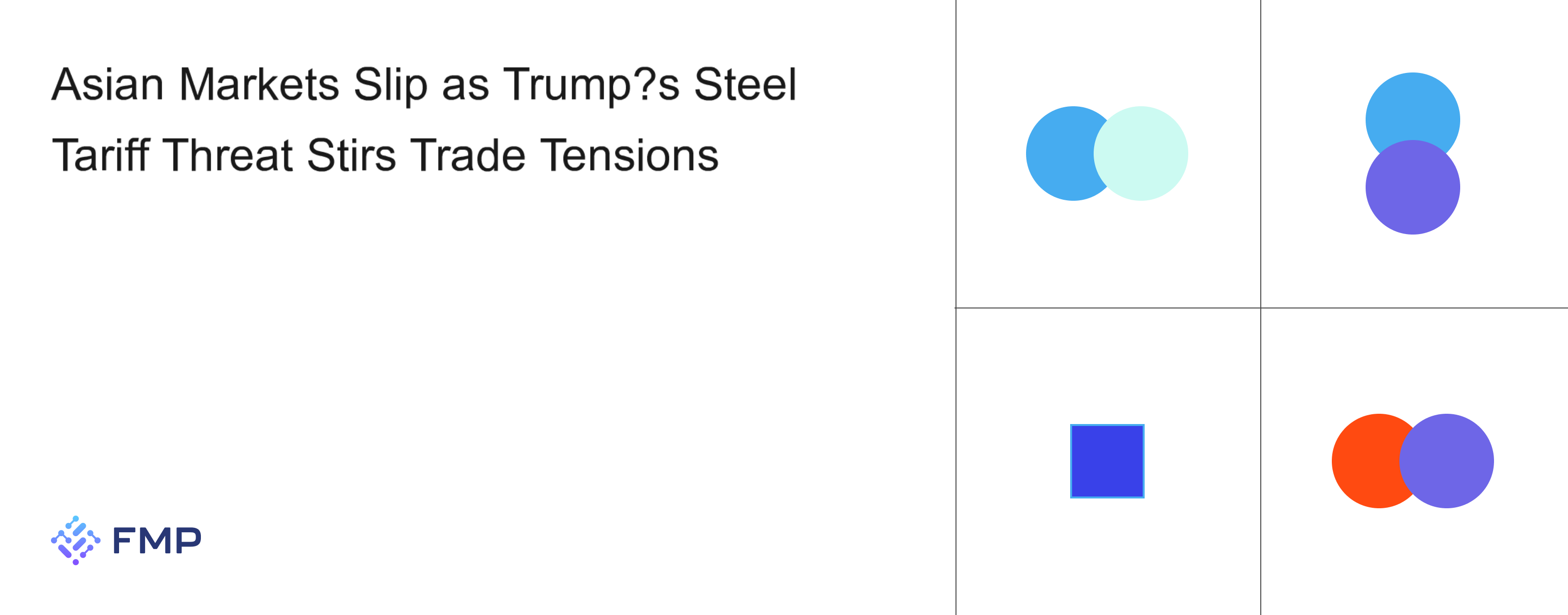
Asian share markets wavered on Monday as renewed U.S.–China trade frictions weighed on investor sentiment. President Trump’s weekend warning to hike steel and aluminum tariffs to 50% starting June?4 hit major Asian steel exporters—including South Korea and Vietnam—hard, driving their stock prices lower. Meanwhile, the U.S. dollar eased as traders prepared for key U.S. jobs data and a likely European Central Bank rate cut.
Steelmakers Bear the Brunt of Tariff Fears
Shares of South Korean and Vietnamese steelmakers plunged after Trump announced plans to double existing tariffs. Given that both countries ship substantial volumes of steel to the United States, the prospect of a 50% levy raised immediate concerns about profit margins and future order volumes. Industry executives are now scrambling to assess the financial impact if the higher tariffs take effect next week.
Actionable Insight: To monitor which Asian steel names and other exporters are experiencing the heaviest volume and price swings, you can consult the most active stocks leaderboard in real time.
Dollar Slips Ahead of U.S. Jobs and ECB Policy
The U.S. dollar edged lower against major peers on Monday as markets focused on two looming events:
U.S. Nonfarm Payrolls (Friday): A stronger?than?expected jobs report could reinforce Fed rate?hike signals, but a soft print would heighten recession fears.
ECB Rate Decision (Tuesday): Most economists anticipate a 25?basis?point cut to the Eurozone’s deposit rate, aiming to support growth amid sluggish inflation.
Actionable Insight: Stay on top of these pivotal dates by adding them to your schedule via the economic calendar, which tracks the exact release times for both U.S. payrolls and ECB policy announcements.
Trade Talks Remain Up in the Air
On Sunday, Treasury Secretary Scott Bessent said President Trump would soon speak with China’s President Xi Jinping to address a dispute over critical minerals—an essential input for the U.S. clean?energy supply chain. However, Beijing rebuffed Trump’s trade criticisms, suggesting any high?level call could be delayed indefinitely. This diplomatic stalemate is exacerbated by U.S. steel and aluminum tariff threats, prompting fears of further tit?for?tat measures.
Of note, a recent U.S. court ruling found that Trump overstepped his authority when broadly imposing tariffs without congressional approval. Still, White House officials downplayed the decision, indicating that the administration could use alternate “trade?remedy” provisions to maintain a minimum U.S. tariff rate of at least 10% and pursue additional sector?specific hikes.
What Investors Should Watch This Week
U.S. Nonfarm Payrolls (May 31, 08:30?ET):
Consensus estimates call for +200,000 jobs added in May and an unemployment rate holding at 3.7%.
A beat could lift U.S. yields and boost the dollar, pressuring Asian equities further. A miss would support equities but could dampen sentiment around financials.
ECB Rate Decision (June 4, 07:45?ET):
A 25?basis?point cut to the deposit rate is widely expected. Confirming this move could weaken the euro briefly but might spur European banks’ stocks.
Watch for President Lagarde’s post?meeting press conference for hints on future guidance and any comments on China’s growth outlook.
China Diplomatic Signals:
Any confirmation of a phone call between Trump and Xi could temporarily relieve market stress.
Conversely, further delays would likely rekindle safe?haven flows into the dollar and yen.
Sector Focus—Steel & Materials:
Chinese and Indian steel producers could benefit if U.S. import volumes reroute away from South Korea and Vietnam. Track top?traded names among steelmakers via the Market – Most Active API.
Bottom Line: Between the looming export controls, elevated U.S. Treasury yields, and anticipated central?bank decisions, Asian investors are bracing for a choppy week. By pairing real?time stock?mover insights with a clear view of policy calendars, you can better navigate the evolving landscape of trade risks, currency shifts, and rate?driven volatility.

